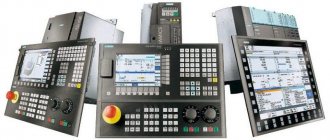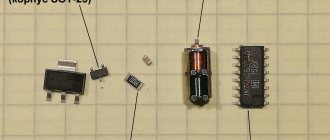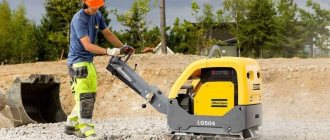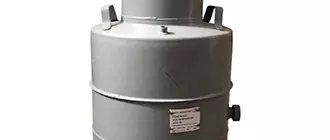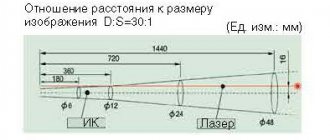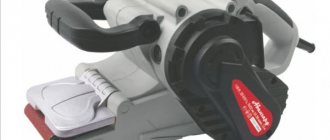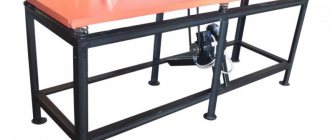There are many types of saws used in woodworking and other industries. Where it is necessary to give a board a certain shape, to make a precise or shaped cut, a home tool will not cope with this task. You need a band saw whose design allows you to make a wide variety of cuts.
What is a band saw?
We are talking about a multi-cutting tool, the main working element of which is a steel band closed in a ring, equipped with sharp teeth along one edge. A band saw is a machine that first appeared in England at the beginning of the 19th century, but only towards the end of the century did such equipment become widespread. This is due to the fact that in those days it was not possible to accurately connect the ends of the steel strip. Today, welding is used for this, and band saws have spread throughout the world, although France continues to hold the lead in their production.
Band saw device
The main component of this carpentry equipment is the work table. It is used to process workpieces made of wood, stone, metal and other materials. The belt itself is installed on two machine pulleys rotated by an electric motor. A band saw for wood also has a load-bearing part - a bed frame, designed to support the large weight and dimensions of the entire device. It is made of metal, although wood is also used for medium and small saws.
The frame is additionally reinforced with bars, screws, and glue. The upper pulley block is responsible for tensioning the webs. The inner part of the frame is equipped with a wheel shaft, and a special screw mechanism is responsible for vertical movement along the guide. It must be said that the saw can be either horizontal or vertical with an excellent location for its pulleys.
Working principle of a band saw
There are models of industrial machines that operate on a three-phase network - 380 V, and some can be connected to a single-phase network - 220 V. The principle of operation of a band saw is as follows: the selected metal strip is put on two pulleys. When one of them is turned on, the blade begins to move and thus the material being processed is cut. A manual band saw machine cuts material that is constantly fed into the cutting zone at a certain speed. The process is controlled by a master who monitors the correct execution of the task.
Manufacturing tasks solved with metal band saws
This equipment is typically characterized by a straight, narrow endless saw blade that moves in a circular path. The blade orientation of a metal cutting saw can be vertical or horizontal. The cutting action is achieved through continuous movement along an arc of a closed saw blade, while simultaneously pressing the workpiece against the blade.
The device of a metal band saw provides the ability to quickly change the shape and size of the final products, taking into account the strength characteristics of the workpiece material. With a large range of rolled metal products to be cut, band saws are almost ideal equipment.
Unlike the force or heat effect that friction saws or bevel shears use to cut metal, band saws produce dynamic cuts that can be easily and quickly adjusted. This reduces wasted time.
Most often, metal band saws are used for:
- Separation of metal along a complex contour with an optionally clean cut surface, since the joints will subsequently be welded into a specific structure. In particular, cutting along parabola, ellipse and similar shapes is successfully performed.
- Straight and angular cuts on metal rods, pipes, rolled profiles, both tubular and solid cross-section.
- Separation of workpieces made of metals and alloys with different indicators of strength, hardness and elasticity.
Thus, in terms of the ratio of production capabilities and price of devices for mechanical cutting of metal, modern band saws have an advantage over less versatile circular saws. Tool life is ensured by the continuous supply of coolant to the processing zone.
Types of band saws
As already mentioned, they can be:
- horizontal;
- vertical.
Such equipment is divided into manual, semi-automatic and automatic. In addition, there are three types of band saw for wood:
- Serrated
. The model with teeth is widely used for processing wood and metal, and it is also used for cutting mineral wool, foam concrete and even food products - meat, fish. - Toothless friction saw
. Its metal belt is also equipped with teeth, but their purpose is to increase the generation of heat during friction and thereby increase the productivity of all equipment. - Electric spark band saw
. Its use is advisable in one case and it concerns the processing of workpieces whose thickness exceeds 15 mm. Conventional circular saws with electric spark action cannot cope with them due to large runout, significant diameter and pitch, which is why a band unit is used.
A variety of blades can be used on the same machine - both special and for specific types of workpieces. The scope of application of a cutting tool depends on the pitch of the teeth, that is, their size, the hardness of the edges, their geometry and setting. For example, for processing large workpieces, a blade with large serrations is selected, and for cutting products made from tool steel, increased tooth hardness is required. Their backs are reinforced if the process is accompanied by strong vibration and impact.
Selection and operation of the belt web
The information presented in the tables below is a guideline only and please be aware that some values may vary. Manufacturing companies of band saw blades indicate their own designations for blade materials, as well as types of setting and tooth shapes. Provide detailed instructions for selection and use. Below are only general ISO symbols.
STEP 1 Selecting fabric material
| Material | Section, profile | Machine type | Canvas material |
| Non-alloy steel | Thin-walled pipes and profiles, small diameter rods | easy | Carbon steel |
| Low alloy steel up to 22 HRC | Carbon steel | ||
| Unalloyed and low alloy steel | Bimetal Matrix II |
STEP 2 Selecting the blade tooth pitch
| CONTINUOUS SECTION | PROFILE SECTION | ||||||||||||||||||
| Constant step | Variable pitch | D mm | 20 | 40 | 60 | 80 | 100 | 150 | 200 | 300 | |||||||||
| Diameter, mm | Teeth per inch | Diameter, mm | Teeth per inch | S mm | Tooth pitch, Z | ||||||||||||||
| to 10 | 14 | up to 25 | 10/14 | 2 | 14 | 14 | 14 | 14 | 10/14 | 10/14 | 10/14 | 10/14 | |||||||
| 10 – 30 | 10 | 15 — 40 | 8/12 | 3 | 14 | 10/14 | 10/14 | 8/12 | 8/12 | 8/12 | 6/10 | 6/10 | |||||||
| 30 – 50 | 8 | 25 — 40 | 6/10 | 4 | 14 | 10/14 | 10/14 | 8/12 | 8/12 | 6/10 | 6/10 | 5/8 | |||||||
| 50 – 80 | 6 | 35 — 70 | 5/8 | 5 | 14 | 10/14 | 10/14 | 8/12 | 6/10 | 6/10 | 5/8 | 4/6 | |||||||
| 80 – 120 | 4 | 40 — 90 | 5/6 | 6 | 14 | 10/14 | 8/12 | 8/12 | 6/10 | 5/8 | 5/8 | 4/6 | |||||||
| 120 – 200 | 3 | 50 — 120 | 4/6 | 8 | 14 | 8/12 | 6/10 | 6/10 | 6/10 | 5/8 | 5/8 | 4/6 | |||||||
| 200 – 400 | 2 | 80 — 150 | 3/4 | 10 | 6/10 | 6/10 | 5/8 | 5/8 | 4/6 | 4/6 | 4/6 | ||||||||
| D - cross section S - profile wall thickness Z - blade pitch, number of teeth per inch | 12 | 6/10 | 5/8 | 4/6 | 4/6 | 4/6 | 4/6 | 3/4 | |||||||||||
| 15 | 4/6 | 4/6 | 3/4 | 3/4 | 3/4 | ||||||||||||||
| 20 | 4/6 | 4/6 | 3/4 | 3/4 | 3/4 | ||||||||||||||
| 30 | 3/4 | 3/4 | 3/4 | 2/3 | 2/3 | ||||||||||||||
| 50 | 2/3 | 2/3 | 2/3 | ||||||||||||||||
Blade tooth profile
| The rake angle of the tooth is 0°. For cutting high carbon alloys, materials with small cross-sections, thin-walled profiles and pipes. |
| The rake angle of the tooth is 10°. For cutting solid bars, thick-walled pipes made of alloy steels. |
| The rake angle of the tooth is 16°. For cutting solid bars made of high-alloy steels, difficult-to-cut metals and non-ferrous alloys. |
| The front angle of the tooth has two points 10° and 16° and a longitudinally ground chamfer, which improves the roughness of the machined surface. For cutting solid bars made of high-alloy steels. |
How to choose a band saw?
The first and most important criterion that determines the choice is the type of material being processed. If you plan to cut steel, then you need a metal band saw. In addition, such equipment is divided into household, semi-professional and professional. A hand-held band saw of small dimensions and weight is ideal for working at home. With its help, the master will be able to make various furniture, cut blanks, etc.
The middle class of saws can be used both in the home workshop and in the workshop, but professional machines are suitable only for industrial production. Having decided on the class, you can proceed to choosing the main technical characteristics:
- Depth of cut. This parameter determines the maximum thickness of the workpiece.
- Width of cut. This value shows the maximum width the workpiece can have.
- Maximum workpiece diameter.
Band saw rating
Popular models include:
- Jet Band Saw
. Processes workpieces up to 300 mm wide. Its power is enough to cut wood from a wide variety of species - ash, beech and others. It is easy to place the necessary parts on a thick metal frame; it does not deform from high vibration and loads. - Band saw Anchor Corvette
. This unit is more suitable for industrial production. Its power is 1000 W, and the cutting blade moves at a speed of 900 m per minute, allowing you to cut workpieces from a wide variety of materials. - Bosch band saw
. This company produces both machine tools and hand tools that run on batteries. The latter can be taken with you and used for cutting pipes, angles, rods and other parts. You can work with such a tool in all positions; it is compact, convenient and easy to operate.
Operation of the belt web
An example of a strip design:
| M42 20x0.9x2360 4/6 N | M42 | bimetallic blade M42, high-speed steel teeth |
| 20x0.9x2360 | width x thickness x length of the blade, mm | |
| 4/6 | blade tooth pitch, 4 – 6 teeth per inch, variable pitch | |
| N | tooth shape, rake angle 10 |
| Very fine dusty chips | Thick, heavy shavings with a blue tint - the blade is overloaded | Loosely wound (twisted) chips - ideal cutting conditions |
The tension value of the belt web should be approximately 300 N/mm. If the blade tension is not sufficient, it is possible to make a non-perpendicular cut. When the tension of the fabric is excessive, rupture is possible. In two cases, the service life of the belt web will be significantly reduced. The tension force is monitored using special devices - strain gauges.
Let's look at how the canvas is rolled in:
- Set the required speed;
- Start cutting at 70% of the power recommended for the blade and 50% feed speed;
- If vibration occurs, you should quite carefully reduce the feed speed until it comes to a complete stop. It is necessary to monitor chip formation and determine from the resulting chip shape whether the blade is overloaded.
After making a cut of 400-600 cm or at least 15 minutes of actual sawing time, you should gradually increase the blade speed to the required speed and gradually the feed speed.
Cooling and lubrication are mandatory in the vast majority of metalworking operations. When processing aluminum and aluminum alloys, coolant allows you to maintain a better surface finish. Remember that the service life of the saw blade directly depends on the selection of coolant. The main task is to prevent the canvas from being overheated.
Band saw blade
Cutting tools differ not only in the nature and arrangement of the teeth, but also in the material of manufacture. The saw blade for a band saw can be made from:
- Carbon steel
. Used for cutting wood. - Bimetal
. Often such blades are equipped with carbide teeth. This means that they are soldered with carbide. A blade fused from two metals is more popular, and all because the edges of its teeth are hard and the tape itself is flexible.
Any tape is made by cutting the material to size and welding its ends, followed by cleaning the seam. The cutting tool is welded using special equipment, which makes it possible to obtain an almost imperceptible joint that does not in any way affect the quality of the saw. On the same machine, you can use different types of blades, depending on the type of material being processed and the task facing the master.
The ability to independently saw wood or metal into finished workpieces forces many zealous owners to acquire special bandsaw machines. However, for high-quality cutting, it is not enough to buy and install a ribbon. It is also necessary to select high-quality band saws, learn how to cut and sharpen them. Only then will the cutting line be smooth, the workpiece will come out of the machine with clearly defined dimensions, and losses during sawing will be minimal.
Content
- Band saws for woodworking
- Band saws for metal work
- Features of sharpening band saws
- Editing and sharpening a band saw video
- Benefits of cutting with a band saw
- Compact band saws for private households
- Makita band saw. We cut along! Video
Band saws for woodworking
Band saws for wood are used as a cutting blade in horizontal sawing machines such as “Kedr”, “Taiga”, “Altai”, “Master” and many others.
Most often they are used for primary sawing of round timber, dividing the wood into finished edged lumber. The use of band saws is very economical, since the thickness of the cut is from 1.5 to 2.5 mm, which is an order of magnitude less than that of circular saws. With proper sharpening and setting of the teeth at the right angle, a band saw can be used to cut wood even in severe frosts, without fear of “waves” and defects.
Band saws for metal work
Special band saw machines are used for processing and cutting metal into blanks. The cutting tool in them is a metal band saw, which cuts raw materials into ready-to-use blanks. It is used for both figured cutting and straight cutting. Saws of this type can easily cut both cast iron and stainless steel, as well as products made from various hard alloys. In addition, metal band sawing machines are multifunctional and can be used to cut both foam plastic for insulation and plastic to the required sizes.
Features of sharpening band saws
Before sharpening the saw blades, you need to check the angle of their setting and make corrections if necessary. Wiring is necessary in the following cases:
- ·When switching to the winter/summer sawing period. Changing temperatures require different angles of the teeth.
- ·When sawing different types of wood.
- ·If the teeth are damaged and foreign objects get under the cutting part during sawing.
In these cases, wiring is simply necessary and can only be done on a special machine.
Band saws are sharpened daily. As a rule, saws are sharpened after each shift or as they become dull. Sawing with a dull saw can result in poor-quality cutting, so sharpening should be done on time.
To sharpen band saws, special machines with abrasive wheels or disks are used, which allow you to process one band saw blade in the shortest possible time.
Benefits of cutting with a band saw
They say that 90% of the success of high-quality sawing depends on proper routing and sharpening of the band saw, and if everything is done correctly, then the output can be up to 70% of the spent timber in finished products. This is why band saws are so popular in small businesses and private households. In addition, there are several more fat advantages in favor of cutting with a band saw:
- Low equipment installation costs. A massive foundation for the machine is not required and it is sufficient to place it on level rails;
- Possibility of sawing large diameter logs. Depending on the modification of the machine, the diameter of the logs can reach up to 1100 mm;
- Obtaining finished edged lumber without additional processing (CDK, multi-saw);
- Easy to operate and maintain the machine.
It is thanks to these advantages that a band saw has become a necessary attribute in a strong household, which allows you to save significant funds on the purchase of finished lumber. The main thing when purchasing a machine is to immediately select a supplier of band saws that will be distinguished by enviable quality and wear resistance. When choosing such a manufacturer, you should definitely study the technical characteristics of the band saw, reviews about it and review the requirements for sharpening equipment. Special attention should be paid to bilork band saws, which are made of high-quality alloy steel and can withstand many sharpenings.
During operation they do not tear for a very long time, and special lubrication and polishing of the blade allows it to be used in conditions of constant humidity without the risk of rusting. By the way, this option is quite economical, since the cost of a bilork saw is almost 25% lower than that of its analogues from other manufacturers.
Compact band saws for private households
There are situations when a large machine is simply not needed on the farm and spending money on it for rare cases of sawing is simply unreasonable. A Makita band saw was created especially for these cases, which weighs no more than 6 kg and can be used for cutting both wooden and metal workpieces. The size of sawn workpieces can reach up to 120mm in diameter.
Some modifications are equipped with autonomous power sources (batteries), which allow you to use the tool in hard-to-reach places without connecting to the network. It has a two-speed cutting adjustment and is convenient and easy to work with. This option is ideal for small volumes of work and narrow workpieces.
Author: Sergey and Svetlana Khudentsov
0
DIY band saw
There are many craftsmen who want to make a metal band saw with their own hands. Some people use an old bicycle for this, others use a jigsaw, but the simplest model can be made from plywood:
- Make a frame in the shape of the letter “C”.
- Assemble the table in which the lower pulley, motor and drive pulley will be located.
- Place the tabletop on the support and cut out future pulleys from chipboard. The larger their diameter, the better the saw will work.
- To make a lift that will ensure the movement of the movable block, you will need a block. It should be installed under the block and attached to the lever using a tight spring.
- When attaching the pulley, install the bearings necessary for installing and dismantling the wheels.
- A DIY band saw at home involves making guides on a small block. Their function can be performed by three roller-type bearings.
- Lubricate the unit and test it in action by putting a pre-purchased cutting blade on the pulleys.
Design and assembly of a tape machine
You can make a unit for sawing various materials yourself; band saws work great in workshops. You can assemble a saw with your own hands at the lowest cost and provide for all the details of the work.
Joinery units for sawing wood of the strip type have a work table at the base, working and additional elements are located on it, and the cutting blade is fed in a circular motion, resting on two wheels. To design and install full-fledged equipment, sufficient space is required, since the equipment, together with the supply line, is large.
You can make your own portable tabletop installation for manual sawing, but in a small workshop space you cannot cut logs into boards.
Frame structure
Solid wood is chosen for the bed to avoid vibration. The surface of the desktop can be made of thick plywood, and the side ribs can be edged with slats or metal. The supporting rod is made in the form of a beam. A schematic drawing is first made, the dimensions of the parts on which depend on the horizontal dimensions and height of the workshop. The pre-designed height of the frame, the diameter of the pulleys and the length of the rods are indicated. Accurate detail drawing can be made, which is more convenient for assembly.
The height of the table for work is provided at a comfortable size, while providing space for placing the drive and lower pulley, waste chips and the engine itself. The table can be of any shape, but often the frame is made in the form of a cabinet with closed sides, which at the same time serves to accumulate chips. Easy to open for easy cleaning.
The tabletop is located directly on the frame. Sometimes the height of the lower bed is not enough, in which case a strong extension is made to raise the surface of the desktop to the required height.
Installing the rod and pulleys
The support rod is made of a timber profile with a cross-section of at least 8×8 centimeters. Two supports are attached to it from the side taken as the conventionally rear surface, on which the pulleys (wheels) will be located. The supports are made of strong material; plywood with a durable frame is acceptable. The distance between the wheels is chosen so that the sawn log passes with a margin on the sides.
The diameter of the pulleys is chosen arbitrarily; an increase in the indicator leads to better work. For selection, there is an unspoken rule according to which the ratio of the cutting blade to the pulley diameter is 1/1000. For example, for a 4 mm wide belt, the wheel diameter should be 400 mm.
The diameter of the wheel for tensioning the belt drive is selected depending on the length of the cutting belt, the diameter of the main pulleys and the engine speed.
The edge of the belt pulleys is made slightly convex, about 5-10˚, which promotes self-centering of the belt, which is why it does not go to the side and does not fall off. A shallow groove is provided on the drive pulley to accommodate the belt. Typically, inner tubes are used to cover the pulley, the rubber of which prevents the tape from slipping off.
The upper pulley is placed on a horizontally moving block to select the belt tension. To do this, you need a lifting mechanism, a simple version of which is a beam connected by a spring to a lever and located under the block. The lever is secured with several bolts at different levels, and the spring provides the required pressure.
The lower pulley is made up of two wheels (driver and driven) located on an axle. It is important to balance the lower and upper pulleys in plane, minimizing the appearance of “eights”. The upper pulley is conveniently secured with self-aligning bearings firmly attached to the wheels. After completing the assembly of this stage, a test run of the unit is carried out for a short time.
Installation of guides for canvases
To ensure that the saw cuts the material smoothly and the tape is not pressed through, guides are installed on a narrow beam along the blunt saw end. A common version of the device consists of three bearings located on the beam, one of which rests the flat side of the canvas, the other two support it from the sides. Sometimes wooden stops are placed on the sides instead of bearings.
The guides are aligned at the reference point so that there is no vertical deviation at the opposite end; for convenience, the position of the beam is noted with the canvas stretched.
Cutting band soldering process
Soldering in the workshop occurs as follows:
- the places at the junction of the canvas are ground at both ends, and a brass strip is placed between the surfaces;
- to make a strip, cut a piece of brass (0.3−0.4 mm) to the width of the saw blade, moisten it and sprinkle it with borax powder on both sides;
- The mite sponges are heated in an accessible way (gas burner or forge) until they are bright red, applied to the site of adhesion and pressed;
- the strip is heated by hot sponges, the brass melts and spreads, and borax works in the form of a flux, which prevents oxidation of the solder when heated;
- The pliers are not removed until the joint has completely cooled and the solder has hardened; after removing them, the joint is moistened with a wet sponge for hardening;
- inspect the joint, its hardness should correspond to the fabric;
- if the joint is hard, then the heating procedure with pliers is repeated until the joint becomes straw-colored, and gradually cooled;
- soft soldering requires another hot heating with tongs and more rapid cooling;
- to prevent the pliers' jaws from being soldered to the saw strip during the process, a chalk solution with liquid glass is applied to their contact surfaces;
- to install and tension the lower and upper pulleys, use a handle, check the correct placement of the stop on the disks and rollers by rotating, and adjust the correct passage;
- turn on the unit for a short time and further adjust it if necessary.
Installing additional guides
The ideal position for the guides is considered to be a distance of 30-40 mm from the log; it is not recommended to do more. If the band saw will cut wood of different widths, it is better to provide the possibility of adjusting the guide elements.
After these assembly steps, the band saw is ready for use, but safety precautions require the manufacture of a protective casing for installation on the upper pulley. This is done in case the rapidly rotating belt slips off the pulley - this way it will be held up by the casing.
The container for collecting chips is made easy to remove and clean. Since waste collection is usually carried out in the lower part of the frame, the belt drive is placed in the side space so that it does not become clogged with chips. The engine is also covered with a casing to prevent dust and processing waste.
To prevent the wood of the machine from deteriorating over a long period of time, it is treated with varnish, after using antiseptic preparations.
Features of sharpening band saws
Any tool will sooner or later become dull, and the master will be faced with the question of sharpening it. It can be performed either manually or using special equipment. Sharpening band saws involves setting them, that is, restoring the profile of the cutting edge. There are three ways to set up a saw:
- Classic
. In this case, the teeth are deflected in turn to the right and left sides. - Cleaning
. With this method, the 1st and 2nd teeth are deflected in different directions, and the 3rd is left straight. This makes cutting even the hardest materials easier. - Wavy
. In this case, the edge is given a wave effect. A difficult option that can only be performed by professionals.
Band saw sharpening machine
There are many varieties of such units. First of all, they differ in the type of grinding wheels selected for a specific type of cutting blade. There is no one-size-fits-all saw that can handle any band, so before purchasing one, you need to make sure it fits the saw itself. A small cutting tool can also be sharpened with a needle file, but in industrial production conditions this option is unacceptable. The machine for sharpening band saws can be manual or automatic. In any case, it requires the use of coolant.
The best manufacturers
Among the companies producing band saws, experts recommend the following, which occupy the first lines of the rating:
- Arntz. A German company, in whose production facilities constant monitoring of the quality of products is carried out, and research is also being carried out in order to modernize technologies and improve the characteristics of band saws.
- Lenox. An American company, a special feature of this manufacturer is a specially developed coating, it is called Armor. Thanks to it, the products have increased strength and resistance to physical wear.
- Wikus. Another manufacturer from Germany, which has been at the top of the list of the best manufacturers of band saws for a long period of time. The advantages of the company include many years of experience in the production of tools and a large list of available models.
- Forezienne is a French company for the production and maintenance of cutting tools. Its main feature is the production of blades for band saws from steel, which is made from high-grade rocks and is processed by a hardening and tempering system.
- Lennartz is an equally large manufacturer of blades for tape machines, in demand in Europe. This company specializes in the manufacture of saws based on composite alloys.
- Doall is an American manufacturer, known in the market for its high quality band saws.
All products are reliable and have a long service life.
Canvas repair
Cutting edge breakage is a rare occurrence in woodworking, but metal strip can be repaired and reused in the job. The recovery process includes the following steps:
- measuring the length of the tape web;
- identification of missing fragments;
- edge processing;
- electric contact welding;
- hardening and processing of the weld.
Restoring the blade for a band sawmill requires the qualifications of a craftsman. The cost of the service depends on how many seams need to be made and how wide the inserts should be.


